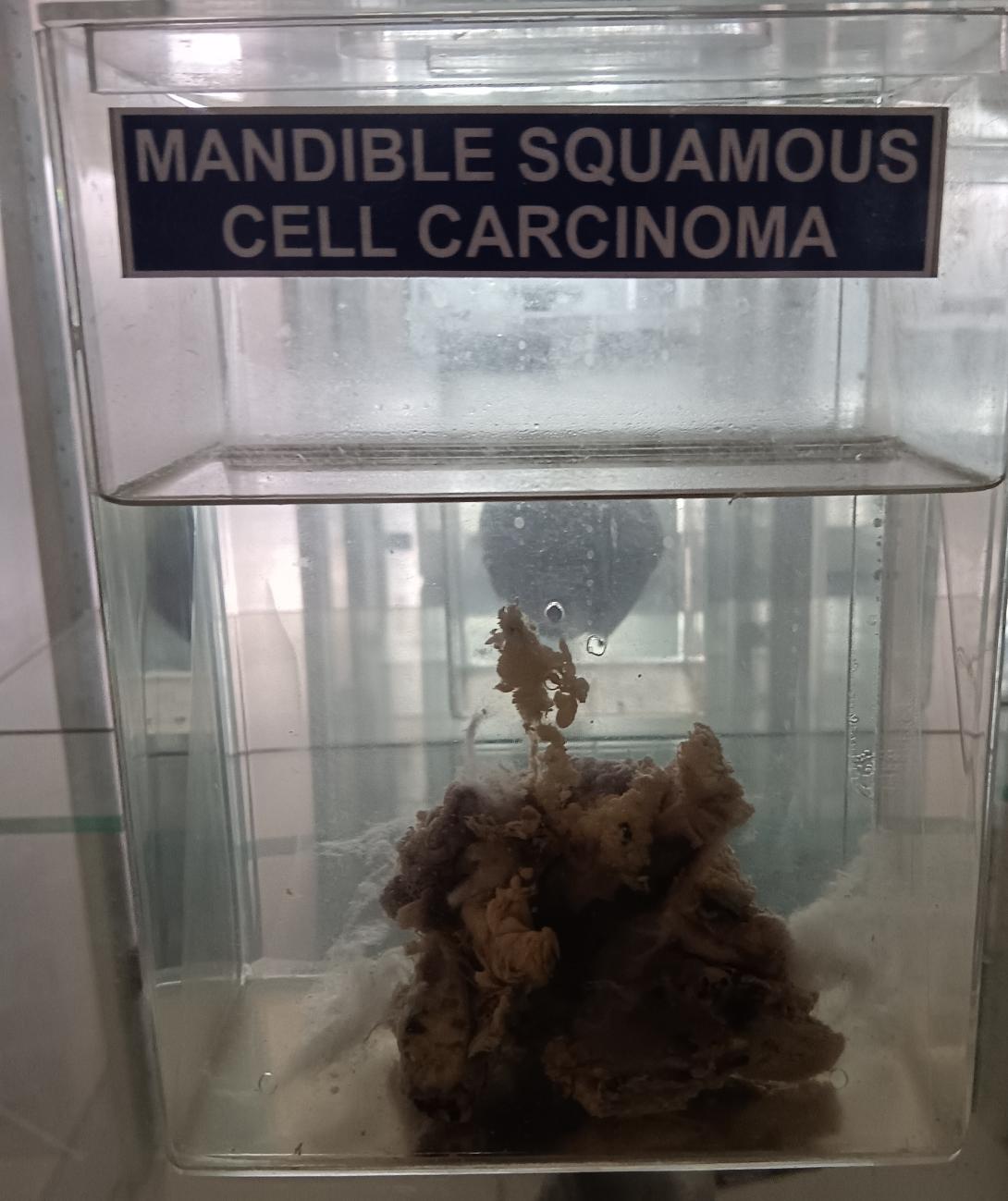Mandible squamous cell carcinoma is a type of cancer that develops in the squamous cells of the mandible, which is the lower jaw bone. Here are some points about mandible squamous cell carcinoma:
- Squamous cell carcinoma (SCC) is the most common type of oral cancer, accounting for 90% of all cases.
- Mandible SCC is a rare form of oral cancer that affects the mandible bone.
- Mandible SCC often presents as a painless swelling or ulcer in the mouth that does not heal.
- Risk factors for mandible SCC include smoking, alcohol consumption, and exposure to human papillomavirus (HPV).
- Treatment for mandible SCC typically involves surgery to remove the affected tissue, followed by radiation therapy to kill any remaining cancer cells.
- In some cases, chemotherapy may also be used in combination with surgery and radiation therapy.
- Prognosis for mandible SCC depends on several factors, including the stage of the cancer, the patient's overall health, and the effectiveness of the chosen treatment.
- Early detection and treatment are crucial for improving outcomes in patients with mandible SCC.
- Regular dental checkups and oral cancer screenings can help detect mandible SCC at an early stage when it is most treatable.
- Lifestyle changes, such as quitting smoking and reducing alcohol consumption, can also help reduce the risk of developing mandible SCC.
Rack Number
Specimen Number
27

